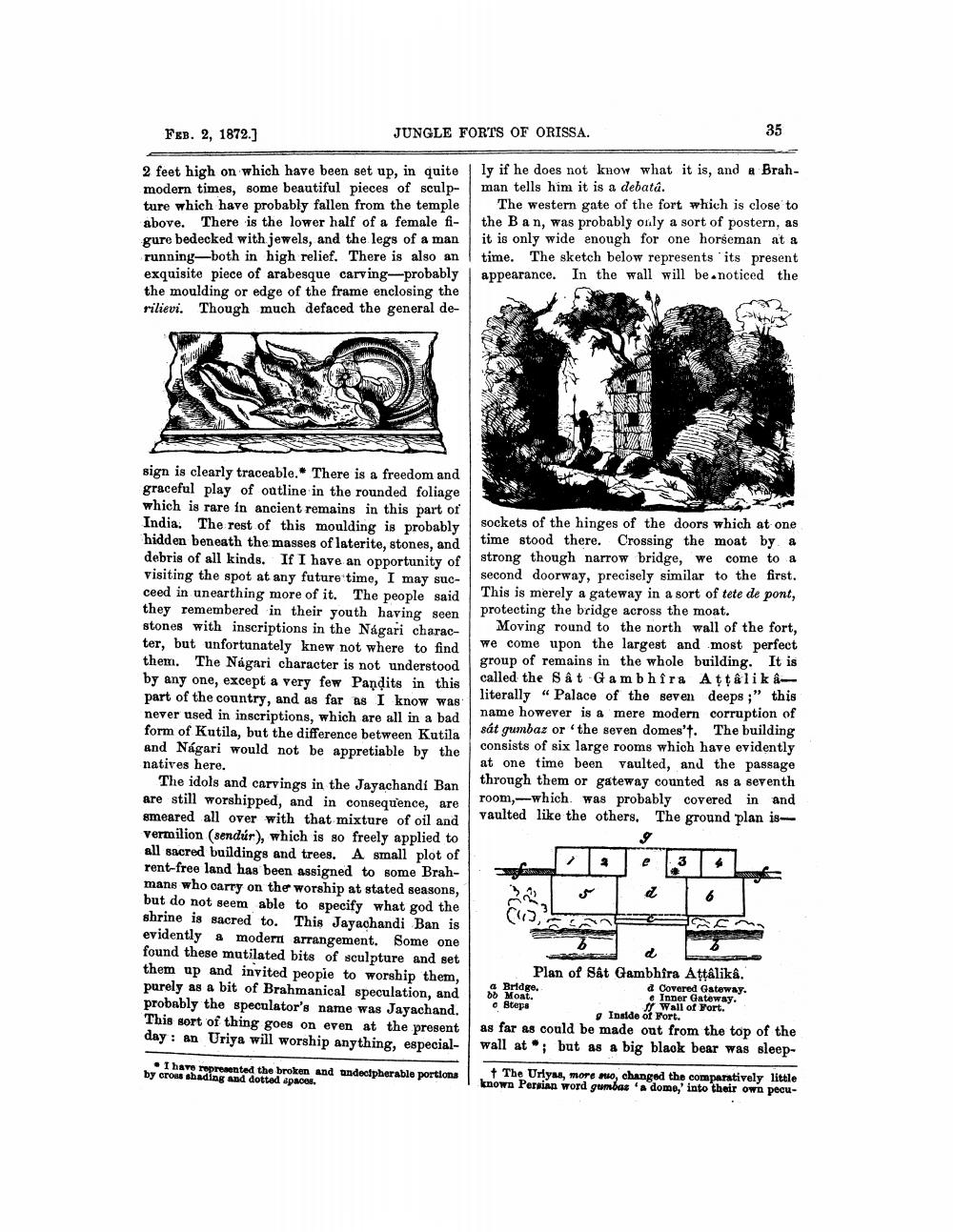________________
FEB. 2, 1872.]
JUNGLE FORTS OF ORISSA.
35
2 feet high on which have been set up, in quite | ly if he does not know what it is, and a Brahmodern times, some beautiful pieces of sculp- man tells him it is a debata. ture which have probably fallen from the temple The western gate of the fort which is close to above. There is the lower half of a female fi- the Ban, was probably only a sort of postern, as gure bedecked with jewels, and the legs of a man it is only wide enough for one horseman at a running—both in high relief. There is also an time. The sketch below represents its present exquisite piece of arabesque carving-probably appearance. In the wall will be noticed the the moulding or edge of the frame enclosing the rilievi. Though much defaced the general de
NW 1 -
SANS
S
sign is clearly traceable. There is a freedom and graceful play of outline in the rounded foliage which is rare in ancient remains in this part of India. The rest of this moulding is probably hidden beneath the masses of laterite, stones, and debris of all kinds. If I have an opportunity of visiting the spot at any future time, I may succeed in unearthing more of it. The people said they remembered in their youth having seen stones with inscriptions in the Nágari character, but unfortunately knew not where to find them. The Nágari character is not understood by any one, except a very few Pandits in this part of the country, and as far as I know was never used in inscriptions, which are all in a bad form of Kutila, but the difference between Kutila and Nágari would not be appretiable by the natives here.
The idols and carvings in the Jayachandí Ban are still worshipped, and in consequence, are smeared all over with that mixture of oil and vermilion (sendúr), which is so freely applied to all sacred buildings and trees. A small plot of rent-free land has been assigned to some Brahmans who carry on the worship at stated seasons, but do not seem able to specify what god the shrine is sacred to. This Jayachandi Ban is evidently a modern arrangement. Some one found these mutilated bits of sculpture and set them up and invited peopie to worship them, purely as a bit of Brahmanical speculation, and probably the speculator's name was Jayachand. This sort of thing goes on even at the present day: an Uriya will worship anything, especial
sockets of the hinges of the doors which at one time stood there. Crossing the moat by a strong though narrow bridge, we come to a second doorway, precisely similar to the first. This is merely a gateway in a sort of tete de pont, protecting the bridge across the moat.
Moving round to the north wall of the fort, we come upon the largest and most perfect group of remains in the whole building. It is called the Sat Gambhira Attalik - literally “Palace of the seven deeps ;" this name however is a mere modern corruption of sát gumbaz or the seven domes't. The building consists of six large rooms which have evidently at one time been vaulted, and the passage through them or gateway counted as a seventh room--which was probably covered in and vaulted like the others. The ground plan is
Plan of Sat Gambhira AttAlika. a Bridge.
d Covered Gateway. do Moat.
& Inner Gateway. Steps as far as could be made out from the top of the wall at ; but as a big blaok bear was sleep
Inside of Wall of Fort.
• I have represented the broken and undecipherable portions by crous shading and dotted spaces.
The Urlyas, more mio, changed the comparatively little known Persian word gumbas 'a dome,' into their own pecu




